
Desert Storm AH-1G Bell Cobra Attack Helicopter
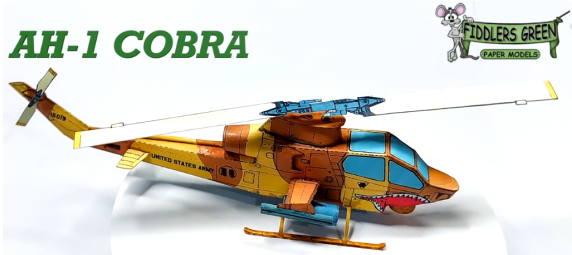
Desert Storm Bell AH-1G Cobra Helicopter: along with the Stealth Nighthawk the Cobra was very important in winning the the Gulf War and no doubt will be important in 'The Return of the Gulf War 1, 2 &3'. The Cobra is in authentic desert camouflage with a tiny 'Free Kuwait' message printed on the rocket launcher.
Desert Storm Cobra Attack Helicopter
Instructional Video
Thanks to Neil for this excellent video that shows how to assemble the Bell Cobra paper model.
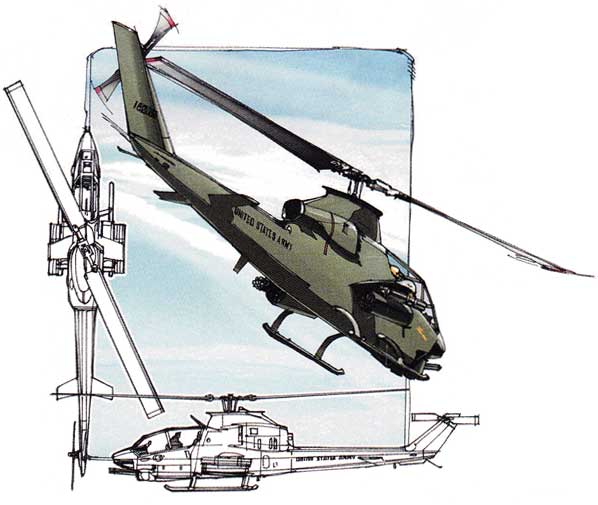
It is truly fascinating to discover how many of the world's really great aircraft sprang not from years and months of painstaking research and development for a planned requirement, but from an unforeseen event needing an immediate response. Necessity does indeed prove to be the mother of invention in these circumstances, and so it was with the Cobra.
Post-Korea, the US Army had worked on the Airmobile' concept and early experience had validated the effectiveness of the sky soldiers' in Vietnam. In many ways this was as expected: it was only the mode of transport that had changed, the Airmobile divisions were essentially mounted infantry, and the Army had plenty of experience in that (001. Vanderpool's first tactics manual drew heavily on the 1898 vintage Horse Soldiers publication). But just as the horse soldier always needed the cavalry to fully exploit their speed and mobility, so their twentieth-century counterparts found a need for armed escort. Theoretically, the Air Force provided the escort. Fast jets were however far from compatible with helicopters, and not able to provide really close-in fire support. Arming some of the helicopters provided a partial answer, but it slowed them down and reduced the number of soldiers that any one lift could insert. A study was therefore initiated with a view to providing an Army solution. Bell, meanwhile, was a few steps ahead.
The advent of the turbine-powered Huey had revolutionized Army Aviation, making Airmobile a practical proposition. Bell was of course heavily involved in the field-introduction of the type, and had formed its own ideas on an armed version, their concept being essentially an armed scout.


Bell AH-1G Cobra Specifications
 |
Crew: 2 - one pilot,
|
 |
||
| A: The cockpit has bulletproof panels, but the forward fuselage is narrow and only lightly armored. | B: Outboard a heavier load of 19 round LAU-69 rocket pods is carried. In total The AH-1G can deploy 52 unguided 70 mm rockets. | C: Both inboard pylons carry the classic armament of seven round 70 mm LAU-68 unguided rocket packs for the destruction of light targets and unarmored vehicles. |
 |
||
| A: The now common tandem seating of the gunner and pilot was first introduced into combat on a helicopter by the AH-1. | B: The AH-1 the UH-1's characteristically noisy two-bladed main rotor system and linkage. | C: Early Cobras had a single Textron Lycoming T53 Turbo shaft rated at 1332 hp. Later models have two. |
| D: The tail and fuselage are very slender. This enables the helicopter to fly tight and low at treetop level to help mask its presence. | E: The HueyCobra has simple but very tough landing skids rather than a complex retractable undercarriage. | F: The AH-1 was designed and developed in such a short period of time that, wherever possible, systems were kept either the same as those in the UH-1 or were made simple like this primitive tail bumper. |
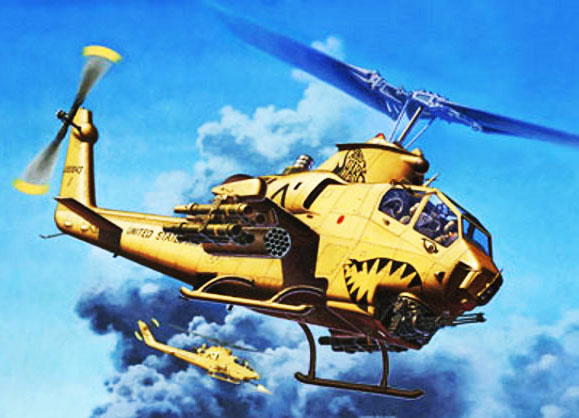
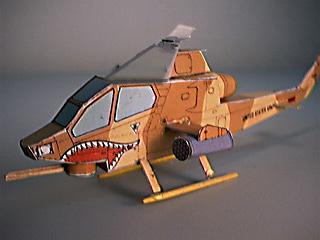
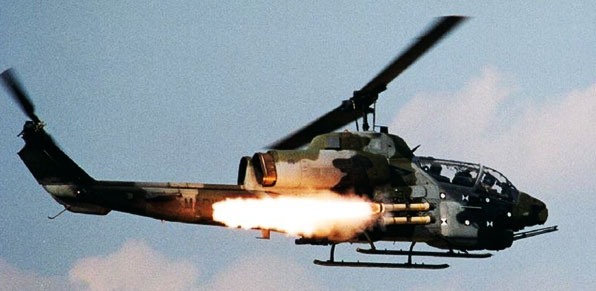
Bell AH-1G Cobra Helicopter
The Bell AH-1G Cobra, the world's first dedicated attack helicopter, was developed in the mid-1960s as an interim gunship for the U.S. Army during the Vietnam War, evolving from the UH-1 Huey with its shared transmission, rotor system, and Lycoming T53 turboshaft engine. First flying on September 7, 1965, it featured a tandem cockpit for a pilot and gunner, slim fuselage for agility, stub wings for armament, and a chin-mounted turret with miniguns or grenade launchers; it measured 44 feet 7 inches in length, 53 feet in rotor diameter, and 13 feet 5 inches in height, with an empty weight of 5,810 pounds and maximum takeoff weight of 9,500 pounds. Powered by a 1,400-shp T53-L-13 engine, it achieved a maximum speed of 171 mph, range of 357 miles, and service ceiling of 11,400 feet; armament included a 20mm cannon, 2.75-inch rockets, and miniguns. Deployed in Vietnam from 1967, it flew over a million hours, forming hunter-killer teams with OH-6 scouts, proving lethal in close air support and escort roles, with 1,116 built before evolving into twin-engine variants. This iconic "HueyCobra" influenced future attack helicopters and saw service in conflicts like Grenada and Panama.


